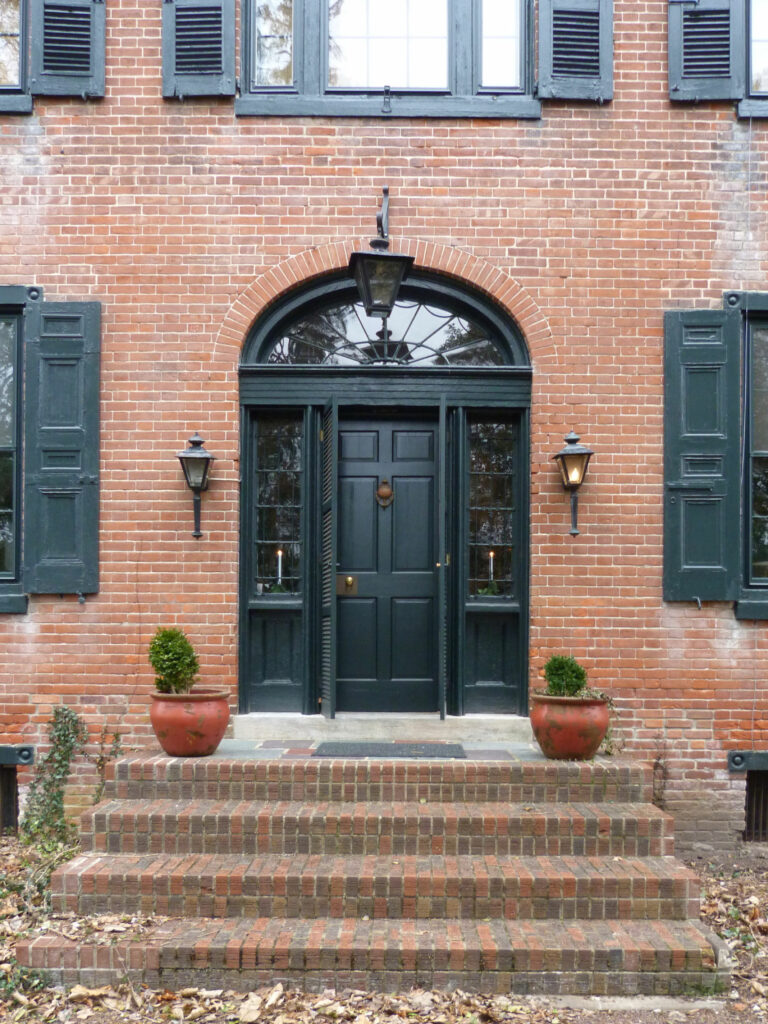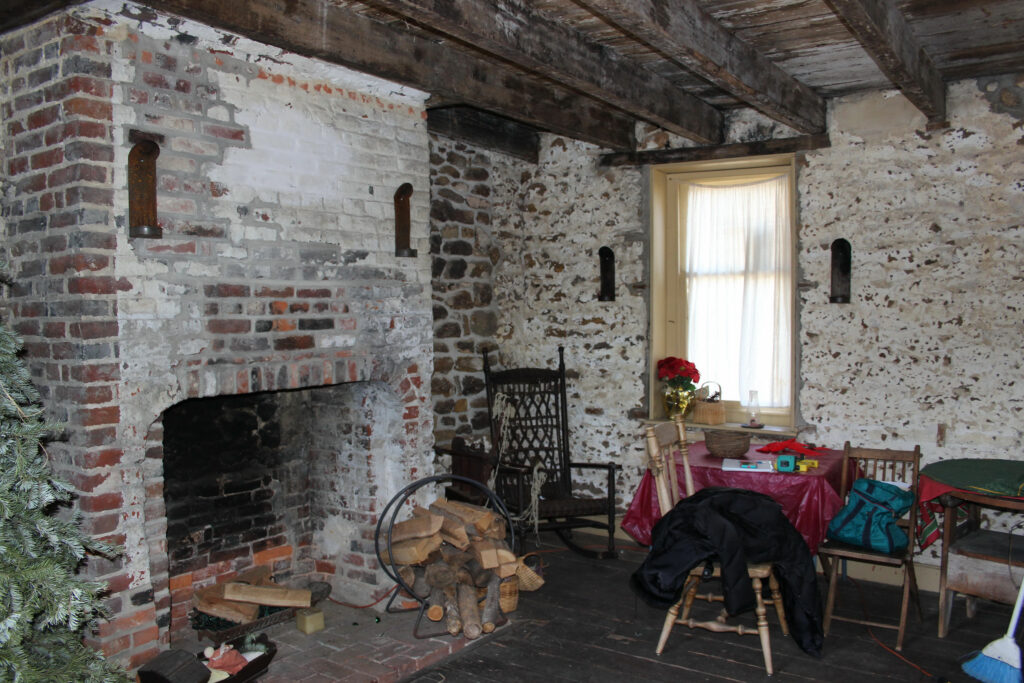Registration
Introduction
Registration is the process of identifying and nominating historic resources to the New Jersey and National Register of Historic Places. Our Registration staff assist citizens with all stages of the process. We guide the public through …
- Preliminary applications
- Nomination forms
- Consideration by the State Review Board
- Submission to the New Jersey Register
- Review by the National Park Service
Register Review
Is your project under regulatory review related to the New Jersey Register of Historic Places Act? Visit our project review section for more information.
Resource inventories and references
Glossary
The registration process has many terms related to a resource’s status. Use our glossary as a quick reference.
Known Historic Properties List
HPO’s inventory of State and National Register of Historic Places listings and a glossary of related terms.
Historic contexts
Historic contexts are a framework for identifying and comparing resources. Learn about these thematic, geographic and/or chronological groups.
What is a listed resource?
There are two separate but similar registers at the state and federal levels. Both registers use the same criteria for eligibility, nomination forms, and review process.
- New Jersey Register of Historic Places (a.k.a. “State Register”)
- The New Jersey Register is closely modeled after the National Register program. It is also a required first step before we can recommend them for national listing. This registry was established through the Register of Historic Places Act of 1970 (N.J.S.A. 13:1B-15.128 et seq.).
- National Register of Historic Places
- The official list of the nation’s historic resources worthy of preservation. Resources can include districts, sites, structures, buildings and objects. These can be of local, state or national significance. This registry was established in 1966 through the National Historic Preservation Act (80 Stat. 915, as amended).
Nearly every municipality in New Jersey has significant properties. These can be noteworthy for one or more of the following reasons:
- Architecture
- History
- Archaeology
- Engineering
- Culture
A note about National Historic Landmarks
The New Jersey and National Registers of Historic Places are different from the third type of registry,
- National Historic Landmarks (NHL) Program
- The first historical registry in the United States, established in 1935. It designates properties of national importance as National Historic Landmarks.
NPS administers both programs but the NHL Program follows stricter listing criteria. It also operates outside of the standard SR/NR processes. While many of New Jersey’s NHLs are on both Registers, they didn’t always follow the same path to listing.
National Historic Landmarks Program
National Historic Landmarks (NHL) have national significance to American history and culture. Learn how this program works and how it differs from the New Jersey and National Registers.
What makes a resource eligible for listing?
Criteria and Criteria Considerations
The following are the National Park Service’s explanations of the Criteria for Evaluation and Criteria Considerations:
Criteria for Evaluation
The quality of significance in American history, architecture, archeology, engineering, and culture is present in districts, sites, buildings, structures, and objects that possess integrity of location, design, setting, materials, workmanship, feeling, and association, and:
- A. That are associated with events that have made a significant contribution to the broad patterns of our history; or
- B. That are associated with the lives of significant persons in our past; or
- C. That embody the distinctive characteristics of a type, period, or method of construction, or that represent the work of a master, or that possess high artistic values, or that represent a significant and distinguishable entity whose components may lack individual distinction; or
- D. That have yielded or may be likely to yield, information important in history or prehistory.
Criteria Considerations
Ordinarily cemeteries, birthplaces, graves of historical figures, properties owned by religious institutions or used for religious purposes, structures that have been moved from their original locations, reconstructed historic buildings, properties primarily commemorative in nature, and properties that have achieved significance within the past 50 years shall not be considered eligible for the National Register. However, such properties will qualify if they are integral parts of districts that do meet the criteria or if they fall within the following categories:
- a. A religious property deriving primary significance from architectural or artistic distinction or historical importance; or
- b. A building or structure removed from its original location but which is primarily significant for architectural value, or which is the surviving structure most importantly associated with a historic person or event; or
- c. A birthplace or grave of a historical figure of outstanding importance if there is no appropriate site or building associated with his or her productive life; or
- d. A cemetery that derives its primary importance from graves of persons of transcendent importance, from age, from distinctive design features, or from association with historic events; or
- e. A reconstructed building when accurately executed in a suitable environment and presented in a dignified manner as part of a restoration master plan, and when no other building or structure with the same association has survived; or
- f. A property primarily commemorative in intent if design, age, tradition, or symbolic value has invested it with its own exceptional significance; or
- g. A property achieving significance within the past 50 years if it is of exceptional importance.
Period of significance
In a separate bulletin, NPS describes the period of significance for a historic resource and how it relates to the Criteria for Evaluation:
Definition of period of significance
Period of significance is the length of time when a property was associated with important events, activities, or persons, or attained the characteristics which qualify it for National Register listing. Period of significance usually begins with the date when significant activities or events began giving the property its historic significance; this is often a date of construction. For prehistoric properties, the period of significance is the broad span of time about which the site or district is likely to provide information; it is often the period associated with a particular cultural group. …
Guidelines for selecting the periods of significance
- Criterion A: For the site of an important event, such as a pivotal five-month labor strike, the period of significance is the time when the event occurred. For properties associated with historic trends, such as commercial development, the period of significance is the span of time when the property actively contributed to the trend.
- Criterion B: The period of significance for a property significant for Criterion B is usually the length of time the property was associated with
the important person.- Criterion C: For architecturally significant properties, the period of significance is the date of construction and/or the dates of any significant alterations and additions.
- Criterion D: The period of significance for an archeological site is the estimated time when it was occupied or used for reasons related to its importance, for example, 3000-2500 B.C.
Additional guidelines
- The property must possess historic integrity for all periods of significance entered.
- Continued use or activity docs not necessarily justify continuing the period of significance. The period of significance is based upon the time when the property made the contributions or achieved the character on which significance is based.
- Fifty years ago is used as the closing date for periods of significance where activities begun historically continued to have importance and no more specific date can be defined to end the historic period. (Events and activities occurring within the last 50 years must be exceptionally important to be recognized as “historic” and to justify extending a period of significance beyond the limit of 50 years ago.)
What are the benefits of listing?
Tax credits
Owning a National Register-listed property opens opportunities for tax credits. Some rehabilitation projects can offset costs with a 20% federal income tax credit. The rehabilitated building must be…
- An income-producing building.
- A certified historic structure that is subject to depreciation.
- Certified as rehabilitated according to standards established by the National Park Service.
Grants and loans
New Jersey Register-listed properties are eligible for state, county and local grants.
- Government agencies and nonprofits can benefit from New Jersey Historic Trust programs. They offer matching grants and low-interest loans for rehabilitation and restoration projects.
- Several counties offer similar grants.
Project review
Regulatory review provides some protection from damage or destruction by public agencies.
Protected regions
The Pinelands (a.k.a. “Pine Barrens”) is federally recognized as the New Jersey Pinelands National Reserve. This seven-county reserve in southern New Jersey protects natural and historic resources. Listed properties automatically receive a “historic resource of significance” status in the Pinelands. This means they are subject to review by the Pinelands Commission.
How does a resource get listed?
The registration process
Move through the steps needed to list a resource in the New Jersey Register, then the National Register.
Quick links
Preliminary Application
Start at the first step of the process by sending us a Preliminary Application.
Preparation guidance
The National Park Service sends HPO supplemental guidance, including clarification of policies. Read the guidance our office uses.
State Review Board for Historic Sites
Browse meeting agendas, posted draft nominations and other announcements.
Registration and property owners
Listing in the New Jersey or National Registers of Historic Places does not place restrictions on private property owner rights. They can utilize, renovate, alter, sell or demolish their property as long as their activity …
- Is within the limits of municipal zoning laws.
- Does not involve federal or state license, permit or funding.
Somebody in my community wants to alter or demolish a privately owned listed property. Can anybody stop it?
Neither register restricts the actions of private property owners. Municipal zoning laws, however, can restrict them at the local level. If your community does not have protections in place, they can adopt historic preservation ordinances and other local measures.
What if an owner objects to a property being listed?
A private property owner has the right to object to listing. In a nominated historic district, this requires a majority of private property owners. To formally object, they must do the following:
- Send a letter to our office. This is either notarized or a declaration under perjury.
- The property may still get listed in the New Jersey Register. However, our office will give owner objections thorough consideration before making any decisions.
- We send the nomination to the National Register Office. It can receive a Determination of Eligibility (DOE) to provide for Section 106 review. However, the property does not get listed on the National Register and is not eligible for tax benefits.



